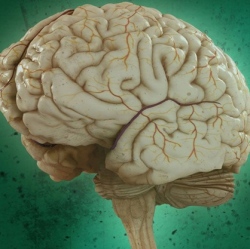
The US Defense Advanced Research Projects Agency announced plans to develop a neural implant device for connecting the human brain to supercomputers. Dubbed the Neural Engineering System Design (NESD), the program aims to dramatically improve current neurotechnology capabilities through research initiatives.
The ultimate goal is to produce a miniaturized brain implant less than one cubic centimeter in size. The essential problem that DARPA is trying to solve concerns data transfer. The human brain is, of course, an enormously complex system with hundreds of billions of neurons. Today’s most advanced supercomputers, meanwhile, can process huge amounts of data in seconds.
The trick is getting the two systems to communicate efficiently, say DARPA officials. The proposed device would serve as a translator between digital computer systems and the electrochemical “language” of the brain.
“Today’s best brain-computer interface systems are like two supercomputers trying to talk to each other using an old 300-baud modem,” said Phillip Alvelda, the NESD program manager, in press materials accompanying the announcement. “Imagine what will become possible when we upgrade our tools to really open the channel between the human brain and modern electronics.”
According to DARPA, current neural interfaces approved for human use feature around 100 channels, each responsible for aggregating signals from tens of thousands of neurons. The NESD program aims to develop systems that can communicate directly with up to one million individual neurons in a given region of the brain.
It’s going to take some doing. DARPA officials say the system will require integrated breakthroughs in multiple disciplines including neuroscience, synthetic biology, low-power electronics, photonics and medical manufacturing.
Potential applications of the technology are vast, but in the short term DARPA is hoping to create devices for those with sight or hearing impairments. For example, the NESD system could feed digital auditory or visual information into the brain with far greater resolution and clarity than current technology.
The NESD program is part of the BRAIN (Brain Research through Advancing Innovative Neurotechnologies) Initiative launched in 2013. You can read more about that at the DARPA web site.
